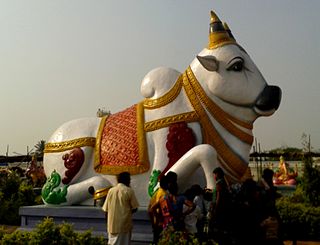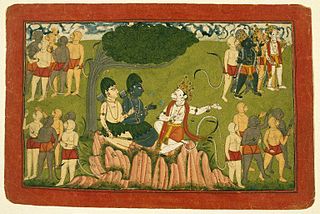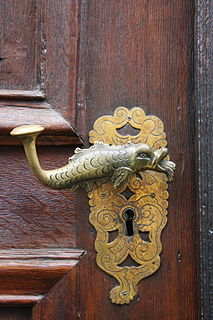 W
WAnthony or Antony of Padua or Anthony of Lisbon was a Portuguese Catholic priest and friar of the Franciscan Order. He was born and raised by a wealthy family in Lisbon, Portugal, and died in Padua, Italy. Noted by his contemporaries for his powerful preaching, expert knowledge of scripture, and undying love and devotion to the poor and the sick, he was one of the most quickly canonized saints in church history. He was proclaimed a Doctor of the Church on 16 January 1946. He is also the patron saint of lost things.
 W
WBlessing of animals can be either of the animal or of the human-animal relationship, and can apply to pets and other companion animals, or to agricultural animals and working and other animals which humans depend on or interact with.
 W
WCattle slaughter, especially cow slaughter, is a controversial topic in India because of cattle's traditional status as an endeared and respected living being to adherents of Hinduism, Sikhism, Jainism, Buddhism, and Parsiism while being considered an acceptable source of meat by Muslims and Christians as well as adherents of other non-Dharmic Religions in India, such as the Animists and Irani Zoroastrians. More specifically, the cow's slaughter has been shunned because of a number of reasons such as being associated with god Krishna in Hinduism, cattle being respected as an integral part of rural livelihoods and an economic necessity. Cattle slaughter has also been opposed by various Indian religions because of the ethical principle of Ahimsa (non-violence) and the belief in the unity of all life. Legislation against cattle slaughter is in place throughout most states of India except Kerala, Goa, West Bengal, and states of Northeast India.
 W
WMany references to ravens exist in world lore and literature. Most depictions allude to the appearance and behavior of the wide-ranging common raven. Because of its black plumage, croaking call, and diet of carrion, the raven is often associated with loss and ill omen. Yet, its symbolism is complex. As a talking bird, the raven also represents prophecy and insight. Ravens in stories often act as psychopomps, connecting the material world with the world of spirits.
 W
WThere are many cultural references to donkeys, in myth, folklore and religion, in language and in literature.
 W
WThe characteristic of cynocephaly, or cynocephalus, having the head of a dog—or of a jackal—is a widely attested mythical phenomenon existing in many different forms and contexts. The literal meaning of "cynocephaly" is "dog-headed"; however, that this refers to a human body with a dog head is implied. Such cynocephalics are known in mythology and legend from many parts of the world, including ancient Egypt, India, Greece, and China. Further mentions come from the medieval East and Europe. In modern popular culture cynocephalics are also encountered as characters in books, comics, and graphic novels. Cynocephaly is generally distinguished from lycanthropy (werewolfism) and dogs that can talk. In addition, the Greeks and Romans called a species of apes cynocephalus, these apes supposed to be the Baboons.
 W
WMacchanu, is son of Hanuman that appears in the Cambodian, Thai and other versions of the Ramayana.
 W
WAnimal worship is rituals involving animals, such as the glorification of animal deities or animal sacrifice. When a god is respected or worshipped by means of a representative animal, an animal cult is formed. Animal cults may be classified according to their outward form or according to their inward meaning, which may of course undergo transformations.
 W
WThe Plagues of Egypt, in the story of the book of Exodus, are ten disasters inflicted on Egypt by the God of Israel in order to convince the Pharaoh to allow the Israelites to depart from slavery, each of them confronting Pharaoh and one of his Egyptian gods; they serve as "signs and marvels" given by God to answer Pharaoh's taunt that he does not know Yahweh: "The Egyptians shall know that I am the LORD".
 W
WThe Rainbow Bridge is the theme of several works of poetry written in the 1980s and 1990s that speak of an other-worldly place where pets go upon death, eventually to be reunited with their owners. One is a prose poem whose original creator is uncertain. The other is a six-stanza poem of rhyming pentameter couplets, created by a couple to help ease the pain of friends who lost pets. Each has gained popularity around the world among animal lovers who have lost a pet or wild animals that are cared for. The belief has many antecedents, including similarities to the Bifröst bridge of Norse mythology.
 W
WIn the ancient Indian epic Ramayana, Sugriva was younger brother of Vali, whom he succeeded as ruler of the vanara kingdom of Kishkindha. Rumā was his wife. He was son of Surya, the Hindu deity of sun. As the king of vanara, Sugriva aided Rama in his quest to liberate his wife Sita from captivity at the hands of the Rakshasa king Ravana. This aid is referred to as Sugrivajne.
 W
WThe word zoomorphism derives from the Greek ζωον (zōon), meaning "animal", and μορφη (morphē), meaning "shape" or "form". In the context of art, zoomorphism could describe art that imagines humans as non-human animals. It can also be defined as art that portrays one species of animal like another species of animal or art that uses animals as a visual motif, sometimes referred to as "animal style." In ancient Egyptian religion, deities were depicted in animal form which is an example of zoomorphism in not only art but in a religious context. It is also similar to the term therianthropy; which is the ability to shape shift into animal form, except that with zoomorphism the animal form is applied to a physical object. It means to attribute animal forms or animal characteristics to other animals, or things other than an animal; similar to but broader than anthropomorphism. Contrary to anthropomorphism, which views animal or non-animal behavior in human terms, zoomorphism is the tendency of viewing human behavior in terms of the behavior of animals. It is also used in literature to portray the act of humans or objects with animalistic behavior or features. The use of zoomorphism served as a decorative element to objects that are typically quite simple in shape and design.